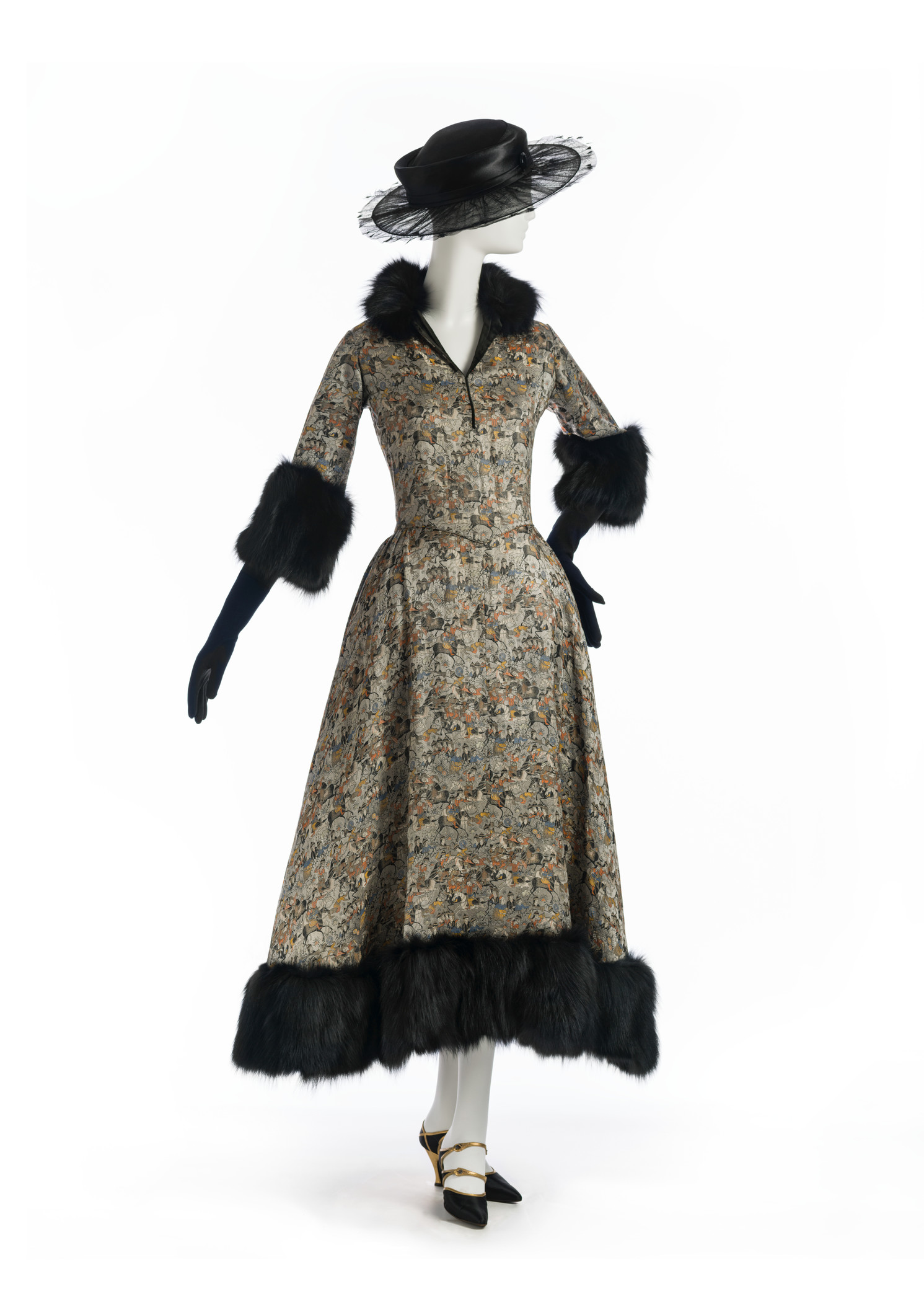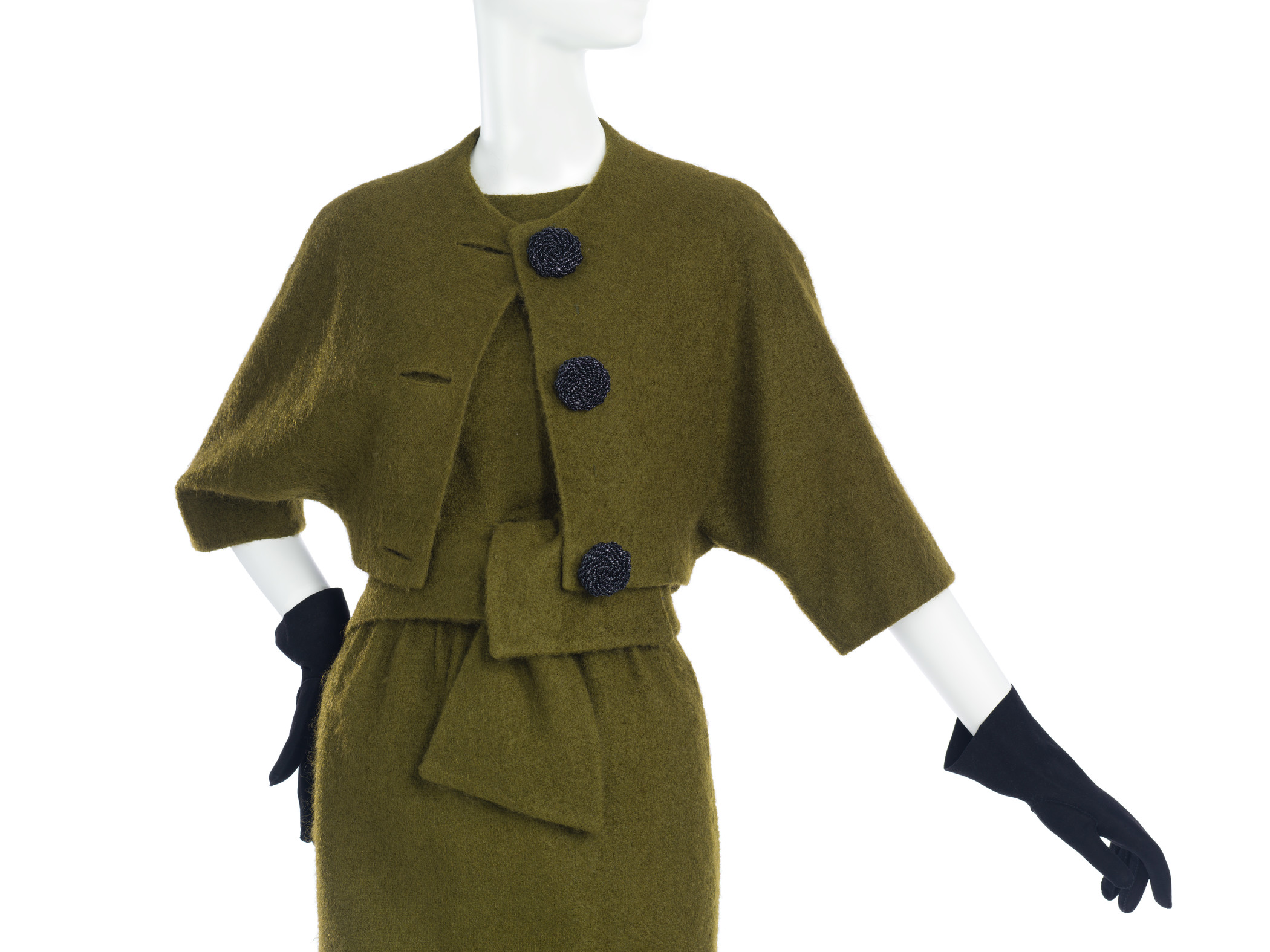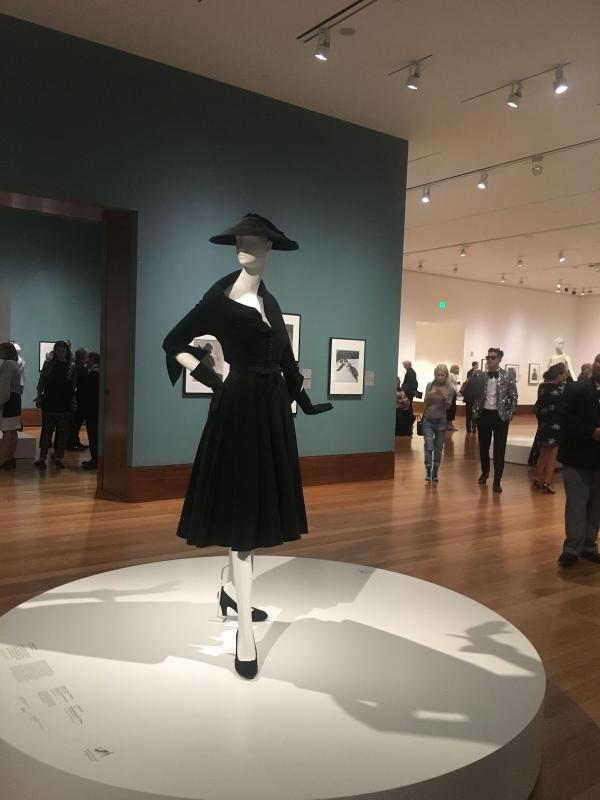LACMA has an active loan schedule, bringing our collections to institutions and audiences worldwide. The Department of Costume and Textiles currently has artwork on loan to the Metropolitan Museum of Art in New York, the Powerhouse Museum in Sydney, Australia, and to the Getty Museum right here in Los Angeles. Paul Martineau, associate curator of photography at the Getty Museum, contacted LACMA’s senior curator and department head of costume and textiles Sharon Takeda and associate curator of costume and textiles Clarissa Esguerra in 2016 to discuss integrating a select group of LACMA’s costume objects to an exhibition on fashion photography, called Icons of Style: A Century of Fashion Photography, 1911–2011. As the Getty does not have costume within their holdings, Paul turned to LACMA to include examples of fashionable dress for the catalogue and exhibition. Tapping LACMA curators’ knowledge of fashion history and the museum’s renowned costume collection, he chose 16 ensembles to be photographed and included in the catalogue, and eight to be showcased in the exhibition at the Getty (now on view). The pieces chosen were examples of the “greatest hits” of 20th and early 21st century designers, including Paul Poiret, Madeleine Vionnet, Coco Chanel, Christian Dior, Cristóbal Balenciaga, Madame Grès, André Courrèges, Halston, Issey Miyake, and Alexander McQueen, among others.


Once the checklist of costumes was complete, the pieces were photographed at LACMA a year in advance of the exhibition for inclusion in the catalogue. This meant making decisions about styling the ensembles long before the installation, including the selection of mannequins. With LACMA’s guidance, the Getty chose the clean, classic look of Schläppi mannequins, a staple of museum display for decades. Clarissa and I then went to work to dress the initial 16 ensembles for photography. Ensembles were accessorized with objects within LACMA's collection or, if necessary, sourced from the marketplace to find historically accurate accessories to serve the ensembles’ integrity. For example, 1930s shoes were pulled from the museum’s collection to complete a 1930s look by Vionnet, while 1970s Halston shoes were sourced for a 1970s Halston dress. LACMA staff worked over the course of more than one year preparing the looks for the exhibition, including padding out the mannequins to the appropriate fashionable silhouette (to see more about the process of dressing, read about what went into dressing LACMA’s 2016 exhibition Reigning Men), making foundation garments, sourcing accessories, photographing the looks on the mannequins, and finally installing the objects at the Getty Museum.
At LACMA, I took measurements and researched the ensembles. The mannequins are a standard size and each costume represented a specific body type and historical form. Gathering information on what was worn underneath the garments for shaping, what body type was fashionable during the period, and primary research images, such as photographs and sketches, all informed me on how to pad the mannequin to achieve the correct silhouette. The mannequins are covered with a barrier of nylon control top pantyhose that act as a second skin. Non-adhesive archival-quality polyester batting is used underneath the pantyhose to create the desired body shape, and the batting is then sewed down. Over that, I make or source slips and crinolines, as necessary, and use nylon tulle to fill out the ensemble or add a layer of air underneath the object.
Mannequins were transported in custom mannequin boxes to the Getty, alongside the art. After their 11-mile journey by specialized art handlers, I spent six days unpacking, condition reporting every art object, and dressing the prepared mannequins.
Clarissa, along with Paul, placed the dressed mannequins on the platforms, taking into account the viewers’ experience of walking around the gallery. The dressed mannequins were lit to the museum standard of five-foot candles, as textile material is extremely light sensitive. Lighting is further refined under the curator’s guidance to make the costumes “glow,” as Clarissa often says.
Paul’s vision of the play between his expertly chosen photographs and historic fashion, are balanced and thought provoking. Icons of Style cements both media—fashion photography and costume—as interrelated art forms, looking at the history of fashion and its cultural surroundings through the lens of the photographer.
Visit Icons of Style: A Century of Fashion, 1911–2011 at the Getty Museum through October 21, 2018.



